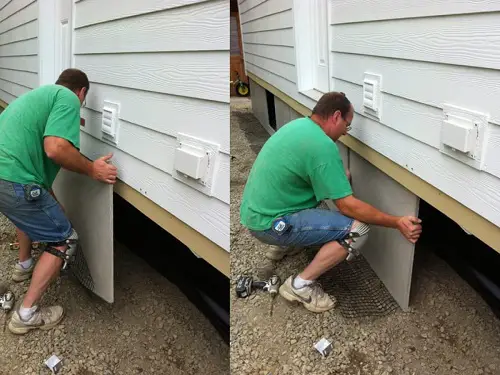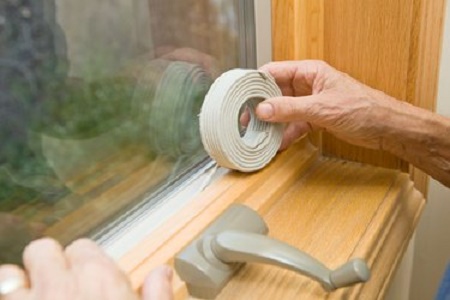Ultimate Guide to Winterizing Your Mobile Home: Protecting Your Home from the Cold
Winter is just around the corner, and it’s essential to prepare your mobile home for the chilly months ahead. Winterizing your mobile home not only helps you stay warm and comfortable but also prevents potential damage caused by freezing temperatures. In this guide, we will walk you through the step-by-step process of how to winterize mobile home, ensuring that it remains well-insulated, protected, and energy-efficient throughout the winter season.
How To Winterize Mobile Home
1. Importance of Winterizing Your Mobile Home
Winterizing your mobile home is crucial for several reasons. It helps to:
- Prevent Frozen Pipes: Insulating and protecting pipes prevents them from freezing and bursting, which can lead to costly repairs.
- Increase Energy Efficiency: Proper insulation and sealing air leaks help to keep warm air in and cold air out, reducing energy waste and lowering heating costs.
- Ensure Comfortable Living Conditions: By taking the necessary winterization steps, you can maintain a warm and comfortable environment inside your mobile home, regardless of the outside temperatures.
- Protect Your Investment: Winterizing your mobile home safeguards its structural integrity, preventing potential damage caused by freezing temperatures and harsh winter conditions.
2. Exterior Preparation
Insulating the Skirting

Properly insulating the skirting of your mobile home helps to create a barrier against the cold. Here’s how:
- Install Insulation: Use rigid foam insulation panels or insulation blankets to cover the entire perimeter of your mobile home.
- Seal Gaps and Vents: Seal any gaps or openings in the skirting using weatherproof sealant or expanding foam. Don’t forget to insulate and seal vents as well.
Sealing Air Leaks
Sealing air leaks is essential to keep warm air inside and prevent cold drafts. Follow these steps:
- Identify Air Leaks: Check for drafts around windows, doors, electrical outlets, and plumbing penetrations.
- Apply Weatherstripping: Use weatherstripping materials, such as adhesive-backed foam strips or door sweeps, to seal gaps and cracks around windows and doors.
- Caulk Gaps and Cracks: Apply caulk to seal any visible gaps or cracks in the walls or exterior of your mobile home.
Protecting Pipes and Water Lines
Protecting your pipes and water lines from freezing is crucial to avoid costly damage. Here’s what you can do:
- Insulate Exposed Pipes: Wrap exposed pipes with insulation sleeves or heat tape to provide an extra layer of protection against freezing temperatures.
- Disconnect and Drain Outdoor Hoses: Disconnect garden hoses, drain the water, and store them indoors to prevent them from freezing and causing damage to the connected pipes.
- Insulate Water Heater and Tank: If your mobile home has a water heater or water storage tank, consider insulating them with an insulating blanket to retain heat.
3. Interior Preparation
Insulating Windows and Doors
Insulating windows and doors helps to minimize heat loss and drafts. Follow these steps:
- Use Window Insulation Film: Apply a clear plastic window insulation film to create an additional barrier against cold air.
- Install Insulated Curtains or Blinds: Use thick, insulated curtains or blinds to provide extra insulation and prevent heat loss.
Adding Weatherstripping

Adding weatherstripping to windows and doors further enhances insulation. Here’s how:
- Check Existing Weatherstripping: Inspect the weatherstripping around windows and doors for wear and tear.
- Replace Worn Weatherstripping: Remove old weatherstripping and replace it with new, adhesive-backed strips to create a tight seal
Checking Insulation
Ensure that your mobile home’s insulation is in good condition to maintain a warm interior. Consider the following:
- Inspect Insulation in Walls and Ceiling: Check for any damaged or missing insulation in the walls and ceiling of your mobile home.
- Add Insulation if Needed: If the insulation is inadequate, consider adding additional insulation in the form of fiberglass batts or blown-in insulation.
4. Heating and Ventilation
Servicing the Heating System
Proper maintenance of your heating system ensures optimal performance during the winter months. Here’s what to do:
- Schedule a Professional Inspection: Have a qualified HVAC technician inspect and service your heating system, including cleaning or replacing filters, checking the thermostat, and ensuring proper ventilation.
Using Space Heaters Safely
If you use space heaters, take the necessary precautions to use them safely
- Keep Clear Space: Maintain at least three feet of clear space around space heaters to prevent fire hazards.
- Use Proper Ventilation: Ensure that the room is well-ventilated when using space heaters to prevent carbon monoxide buildup.
- Turn Off When Unattended: Always turn off space heaters when leaving the room or going to sleep.
Ventilating the Home
Proper ventilation is essential for maintaining air quality and preventing moisture buildup. Consider these tips:
- Use Exhaust Fans: Use exhaust fans in the kitchen and bathroom to remove excess moisture and odors.
- Open Windows Sparingly: While it’s important to ventilate, minimize opening windows during extremely cold weather to avoid unnecessary heat loss.
5. Energy Efficiency Tips
Using Programmable Thermostats
Using programmable thermostats helps to optimize energy usage. Follow these steps:
- Set a Schedule: Program the thermostat to lower the temperature during periods when the mobile home is unoccupied or at night when everyone is asleep.
- Utilize Energy-Saving Modes: Take advantage of energy-saving modes, such as “away” or “vacation” settings, to reduce energy consumption.
Utilizing Natural Sunlight
Harnessing natural sunlight can help to warm your mobile home naturally. Consider these tips:
- Keep Curtains Open: During sunny hours, keep curtains open to allow sunlight to enter and naturally heat the interior.
- Utilize Sun-Exposed Rooms: Spend more time in rooms that receive direct sunlight, as they tend to be warmer.
Managing Humidity Levels
Maintaining proper humidity levels is essential for comfort and preventing moisture-related issues. Here’s what you can do:
- Use Humidifiers: Use humidifiers to add moisture to the air, especially in dry climates or during periods of extremely low humidity.
- Control Condensation: Wipe off any condensation that forms on windows or surfaces to prevent mold or mildew growth.
6. Emergency Preparedness
Creating an Emergency Kit
Prepare an emergency kit to ensure you are ready for any unforeseen events. Include the following essentials:
- Non-perishable food items
- Bottled water
- Flashlights and extra batteries
- First aid kit
- Blankets and warm clothing
Knowing Emergency Contacts
Keep a list of important emergency contacts readily available. Include numbers for local emergency services, utility providers, and your mobile home park management.
How To Put A Water Softener In A Mobile Home
Monitoring Weather Updates
Stay informed about changing weather conditions by regularly checking local weather forecasts. This will allow you to take the necessary precautions and adjust your winterization efforts accordingly.
Here are some frequently asked questions about winterizing a mobile home
When should I start winterizing my mobile home?
It’s best to start winterizing your mobile home before the cold weather sets in, preferably in late fall or early winter. This allows you ample time to complete all the necessary tasks and ensure your home is well-protected before the freezing temperatures arrive.
Do I need to insulate the underbelly of my mobile home?
Insulating the underbelly of your mobile home is highly recommended. This helps to prevent cold air from seeping in and protects your pipes and plumbing from freezing. Use insulation materials specifically designed for mobile homes and follow the manufacturer’s instructions for installation.
How do I protect my water pipes from freezing?
To protect your water pipes from freezing, you can take several measures
- Insulate exposed pipes with pipe insulation or heating tape.
- Disconnect and drain garden hoses, and shut off the outdoor water supply.
- Keep the faucets slightly open to allow a slow drip of water. This can help prevent pipes from freezing.
Should I cover my windows and doors with plastic film?
Covering your windows and doors with plastic film is an effective way to create an additional barrier against drafts and heat loss. Clear plastic window insulation film is readily available and can be easily installed using double-sided tape and a hairdryer to shrink the film tightly.
How can I improve the energy efficiency of my mobile home?
Improving the energy efficiency of your mobile home can help reduce heating costs and keep your home comfortable during winter. Consider the following:
- Install weatherstripping around windows and doors to seal air leaks.
- Add insulation to walls, floors, and ceilings to improve thermal insulation.
- Upgrade to energy-efficient windows and doors if feasible.
- Use window coverings, such as thermal curtains or blinds, to trap heat inside.
Is it necessary to have my heating system serviced before winter?
Yes, it is highly recommended to have your heating system serviced by a professional HVAC technician before the winter season. They will inspect and clean the system, check for any potential issues, and ensure it is functioning efficiently and safely.
Can I use space heaters to supplement heating in my mobile home?
Space heaters can be used as supplemental heating sources, but they should be used with caution. Follow safety guidelines, keep them away from flammable materials, and never leave them unattended. It’s essential to choose space heaters with safety features like tip-over protection and automatic shut-off.
How can I prevent condensation and moisture buildup inside my mobile home during winter?
To prevent condensation and moisture buildup
- Use exhaust fans in the kitchen and bathroom to reduce excess moisture.
- Open windows for a short time each day to allow for ventilation.
- Wipe off any condensation that forms on windows and surfaces.
- Use dehumidifiers to control humidity levels if necessary.
Should I have an emergency backup heating source in case of a power outage?
Having an emergency backup heating source, such as a generator-powered space heater or a kerosene heater, can be helpful during power outages. Make sure to follow safety precautions and have proper ventilation when using alternative heating sources.
How often should I check my mobile home’s exterior for any damage or leaks?
Regularly inspecting your mobile home’s exterior for any damage or leaks is important. Check for cracks, gaps, or missing shingles on the roof, damaged siding, or deteriorated seals around windows and doors. Addressing these issues promptly can prevent further damage and maintain the integrity of your home.
Conclusion
By following the steps outlined in this post, you can effectively winterize your mobile home, ensuring a warm, comfortable, and energy-efficient living space during the cold months. Remember, proper insulation, sealing air leaks, protecting pipes, and maintaining your heating system is key to a successful winterization process. Stay safe, stay warm, and enjoy the coziness of your well-prepared mobile home all winter long.
Now that you’re equipped with the knowledge to winterize your mobile home, it’s time to get started. Stay warm and cozy throughout the winter season.

